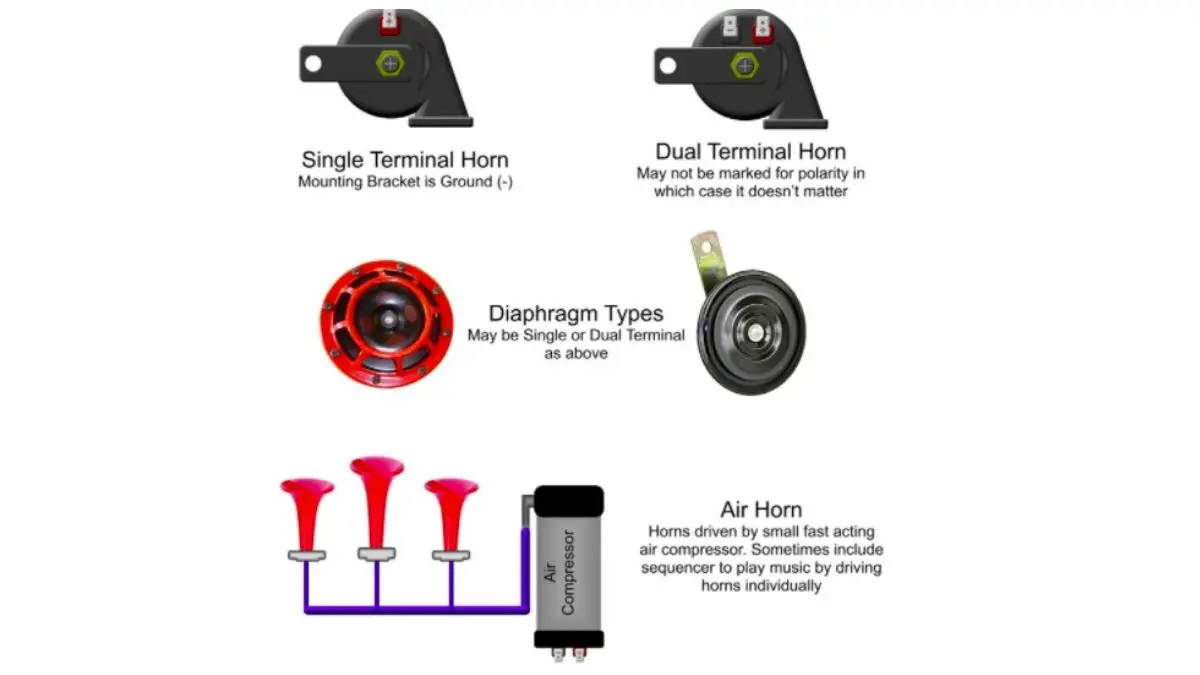There are many different types of car horns that range in design, sound, and usage. One type is air-driven horn, which uses a metal diaphragm with a hole in it to produce sound when air from the vehicle’s exhaust is pumped into it.
Another type is the electro-mechanical horn which produces an electrical signal so that no moving parts need to be replaced or maintained. In this post, I will talk about whether car horns have polarity.
Table of Contents
Do car horns have polarity?
Do car horns have polarity or not? The answer is: It depends on the car’s horn type as follows:
- Single terminal horn – In case your car horn has only one terminal, then the horns’ mounting bracket will be your ground connection. Meaning, a single terminal horn positive lead will go to the horn terminal, and you will close the circuit with the car’s chassis ground.
- Dual terminal horn – By looking at the horn polarity markings, you can tell whether it has polarity or not. If they are marked with polarity or a red (+) and a black (-) that is how you hook them up. If there are no markings you can generally hook them up either way. This applies to either air-driven horns or electro-mechanical horns.
Will a horn work without a relay?
The answer to the question of whether a horn will work without a relay is No. The horn relay functions as a switch to provide power to the horn without overloading the current circuits. Therefore, the horn will not work if there is no relay. If you want a properly functioning vehicle’s horn, replace the faulty relay right away.
Reference
Introduction to Automotive Relays


